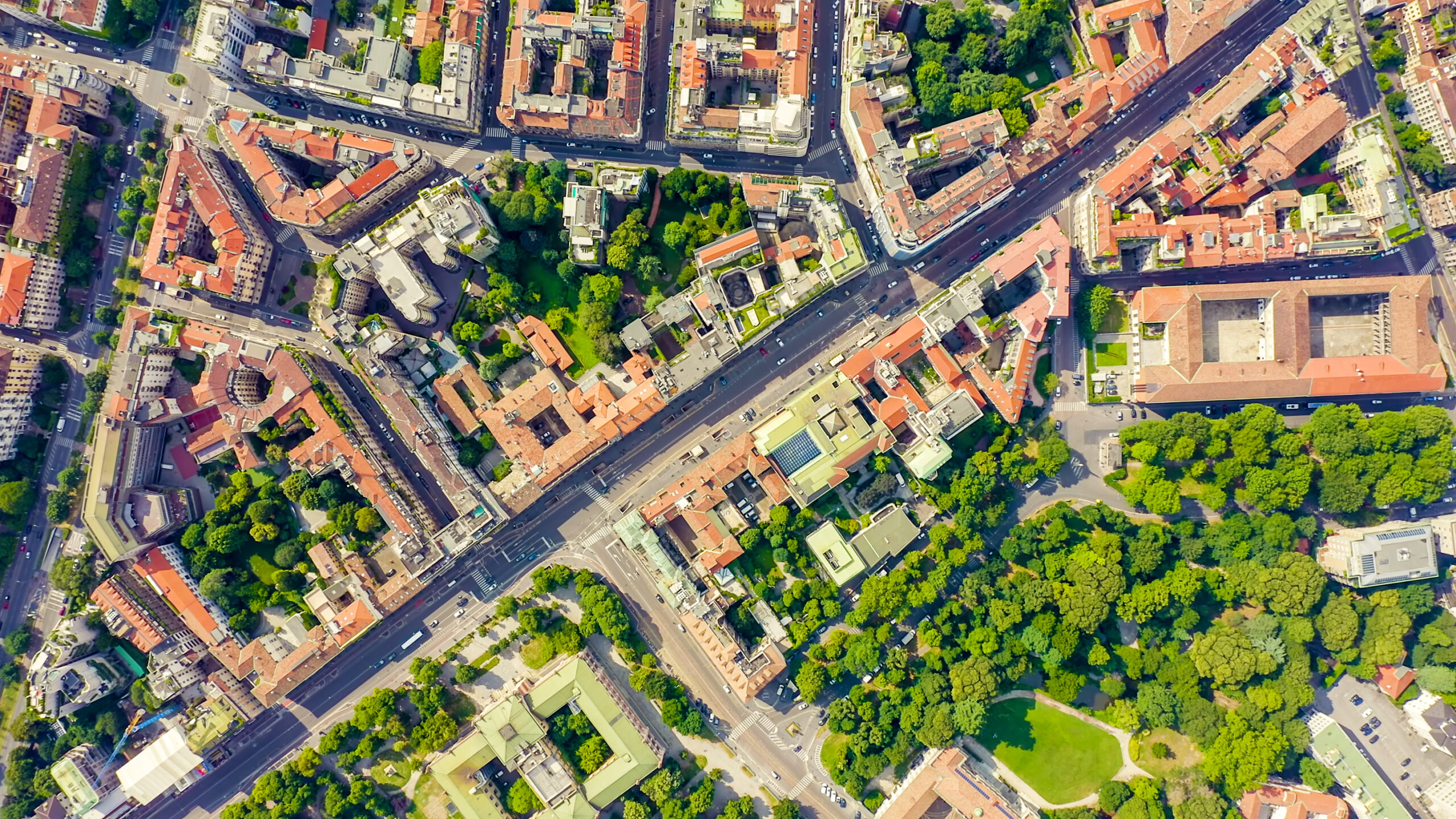Around the world, cities have become hotspots for heat, with the urban heat island effect making urban temperatures 10-15°C higher than nearby rural areas during peak summer periods. In the summer of 2025, heatwaves impacted large parts of Europe as early as June, pushing cities beyond their abilities for mitigation. As an estimated 75% of Europe’s population lives in urban areas, and this share is expected to grow in coming years, millions of people are increasingly exposed to dangerously high temperatures.
Heat of this intensity has been deadly. In 2024, the UN World Health Organisation reported that 175,000 people die from heat-related causes every year in Europe. Heat-related hospitalisations also strain healthcare systems. Portugal found that daily hospital admissions increased by 19% during heatwaves, and France spent over €25 billion on heat-related mortality and restricted activity days between 2015 and 2019.
Due to the urban heat island effect, the burden of extreme heat is not shared equally. A study covering data from 93 European cities found that the urban heat island effect increases summer mortality in cities by 4%. Yet, the same research also points to a promising finding: covering 30% of city surfaces with green spaces could reduce the temperature of the urban environment by up to 1.3ºC and prevent 33% of premature deaths attributable solely to urban heat islands.
Understanding urban greening
As described by the University of the Built Environment, urban greening is the “incorporation of green spaces and elements into urban environments and infrastructure, such as streets, cities, roofs and walls.” Beyond urban parks, urban greening also encompasses street trees, green roofs, living walls, urban forests, guerilla gardens and even water elements designed for climate adaptation.
Urban trees are well known for their ability to capture particulate matter and reduce air pollution, but the benefits of urban greening extend beyond cleaner air, increasing the resiliency of the urban environment in numerous ways.
The positive impacts of urban greening on our cities
Urban greenery has been found to reduce noise pollution, a common issue, with 20% of people living in the European Union exposed to noise pollution levels that are considered harmful to their health. By absorbing, refracting and scattering sound waves, greenery not only lowers decibel levels, but also “offer visual appeal that has been linked to improved perceptions of noise attenuation.”
Additionally, encouragement of biodiversity in urban green spaces helps cities to become more resilient to the impacts of climate change. The C40 Cities Climate Leadership group asserts, “biodiverse ecosystems are more resilient to climate risk, changing conditions and other pressures, such as disease, pests or fire…[and] give us secure food production, safe drinking water, clean air, nature-based recreational opportunities and much more, in addition to protection from climate hazards.”
Green infrastructure is especially crucial for cities where most surfaces are impervious, leading to greater risk of flooding when extreme rainfall hits. “Sponge cities,” designed to absorb the maximum amount of rainwater, by nature have more urban green spaces to encourage absorption and slow reintegration of the excess water into urban blue spaces. Urbanism firm Arup, which conducted a study on global cities’ “sponginess” explains “We need to measure and place more value on green and blue infrastructure – trees, grass and ponds.”
Cooling power: how urban greening mitigates heat
One of the central benefits of urban greening is its ability to mitigate extreme heat in cities. Trees and well-designed green spaces provide shade, reducing the heat absorbed by buildings, streets and public spaces. Additionally, through evapotranspiration, the process by which plants release water vapor in a sort of “sweating”, greenery can cool the surrounding environment.
In an analysis of 293 European cities, research found that surface temperatures in tree-dense city areas can drop by 0-4°C in Southern European cities and as much as 8-12°C in Central European cities. Crucially, tree shade is more effective at reducing temperatures than grassy spaces alone, highlighting a need for biodiversity and variety of greenery.
Economic and social impacts
Heat threatens not only health, but economic productivity. Research shows that cognitive performance declines once temperatures rise above 26°C, with focus and sleep heavily impacted. Thus, the 2025 European heatwave alone is estimated to have cut GDP by 0.5%, a loss comparable to half a day of strikes for every day above 32°C. And, the impact was even sharper in Southern Europe, reaching up to 1.4% in Spain. Lost working hours, disrupted transportation, weakened infrastructure and reduced tourism all translate into billions of euros of losses each year.
Mental health is also at risk. The elevated cortisol levels that occur when our bodies try to keep us cool can elicit stress responses, and increase insomnia, heightened irritability, anger, anxiety, depression, and stress. Heat has also been noted to exacerbate existing mental health conditions like anxiety and depression. A 2022 study of over 2 million people found that hospital emergency room visits “for mental health conditions rise during extremely hot days. Visits for substance abuse, anxiety, mood disorders, and schizophrenia all increased over a nine-year period when temperatures were elevated.”
Green resilience for a cooler future
As European cities grow hotter and heatwaves become more frequent and severe, urban greening is one tool in the fight for more resilient cities. Cities that deploy a myriad of urban greening interventions are poised to become most resilient, as nurturing biodiversity, increasing opportunities for canopy shade, and introducing “sponginess” are all diverse ways to manage the impacts of climate change.
Often underestimated in a world that prioritises technological innovation, nature itself offers solutions to modern urban challenges. As Arup notes, “Nature-based solutions to climate change are on average 50% more cost-effective than engineered alternatives and deliver 28% more added value than grey infrastructure.” When cities invest in urban greening, they are investing in a more resilient future for the environment, public health, economic vitality and overall wellbeing.
Want to learn more? Take the free EIT Campus Introduction to Urban Green Infrastructure course.
